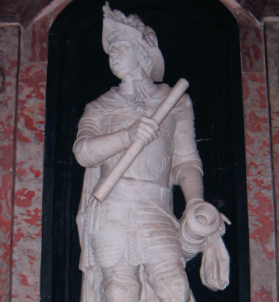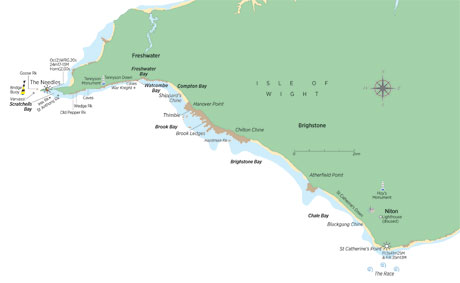Navigational tips and beauty spots around the south-west coast of the Isle of Wight.
Sir Robert Holmes

Holmes was a buccaneering roué whose audacious naval tactics attacking Dutch settlements in Guinea in 1664 earned him a fortune of £40,000 and started the second Dutch War. He followed this up with a devastating attack, again on the Dutch, using fireships to destroy 150 ships of the Dutch East India fleet in Vlie roads and sacking the town of Westerschelling in what became known as Holmes Bonfire.
In 1668 he became the first governor of the Isle of Wight and was elected MP for Winchester a year later but he refused to grow old gracefully. In 1675 Parliament was informed by the collector of customs at Southampton that the islanders were ‘a company of mutinous persons, and the governor was ready upon all occasions to join with them.’ Riddled with gout, he died aged 70 in 1692 leaving one illegitimate daughter and is buried in Yarmouth Parish church. It is perhaps fitting that his resting place is marked by a statue originally intended for Louis XIV. The statue was being shipped to Versailles with the sculptor to finish the head from life. Holmes captured ship, statue and sculptor and had his own head sculpted instead.




